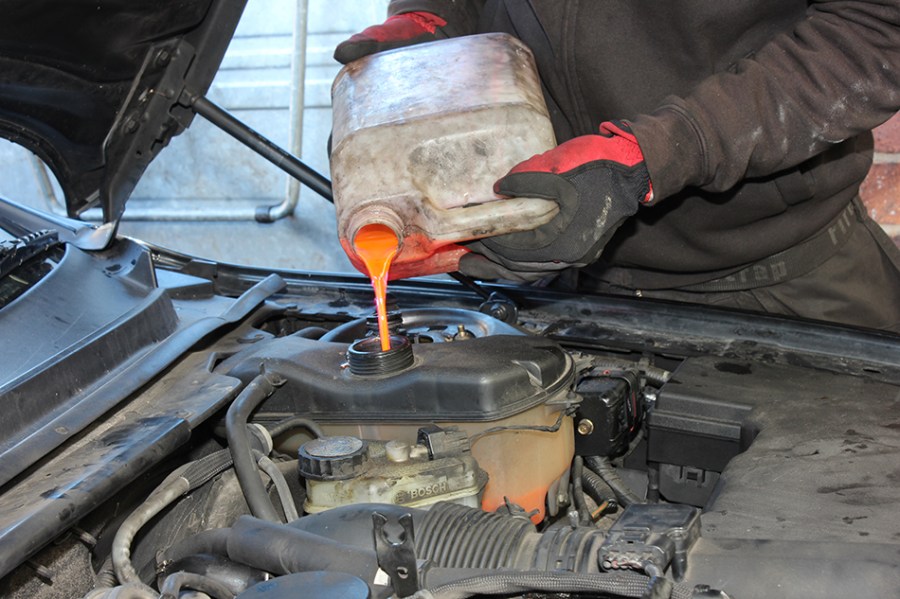Find out how to remove air locks and avoid overheating with our step-by-step guide on how to bleed a car radiator.
Bleeding air out of an engine’s cooling system can be a frustrating job. So we’ve outlined some of the typical problems that can arise and how to resolve them. We’ve also examined a range of methods for bleeding the cooling system. They vary depending on the layout of the engine and car radiator and whether there are any bleed points.
Why are you bleeding your car radiator?
Although perhaps obvious, it’s important to consider why you need to bleed a car engine’s coolant system. For instance, you may need to refresh the coolant as part of a service. Or a large component, such as the radiator or water pump may have been replaced, resulting in coolant loss.
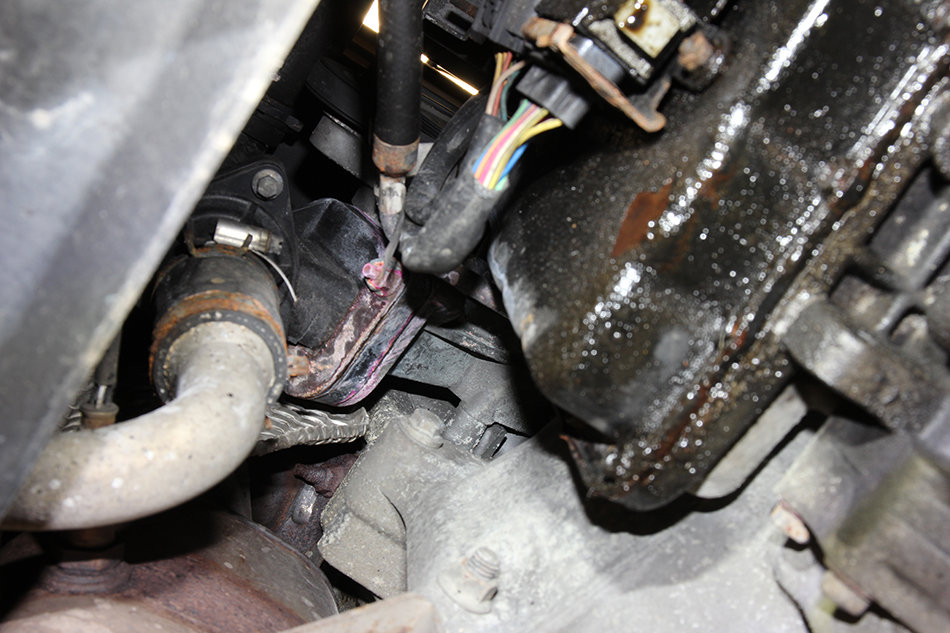
Fixing a problem or leak
If you need to frequently top up the engine coolant, find the cause of this issue. Bleeding the coolant may help to remove air locks, but it won’t fix a leak or a blown head gasket. Depending on the color of the coolant, it may be easy to spot its residue and find a leak. If the coolant is pink for example, then look for pink residue around the ends of the coolant hoses.
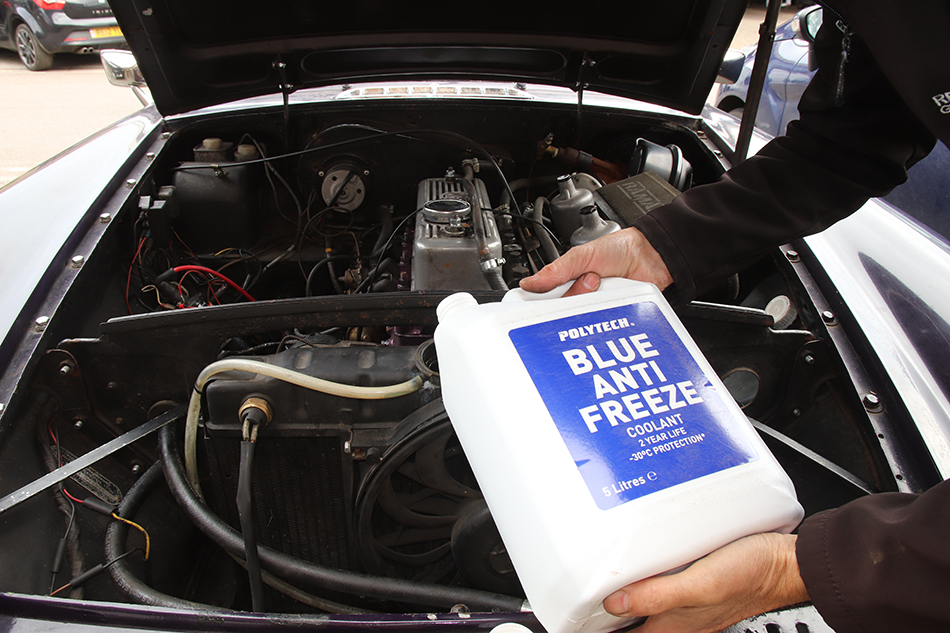
How much antifreeze should be used in an engine?
It’s essential to use the correct type of antifreeze in an engine and to work out its correct dilution with water. Check your workshop manual to find the recommended type of antifreeze. Older engines often need the blue-colored coolant that needs refreshing every two years – although the color does not mean it’s this type of coolant. Modern engines can use a longer-lasting coolant that needs changing after six or more years.
As for its dilution with water, this depends on what is recommended for your engine and the climate. If the winters are cold and the summers hot, you’ll need a concentration of antifreeze to cope with this. Diluting with water is important – using no water doesn’t mean the antifreeze will work better in extreme temperatures.
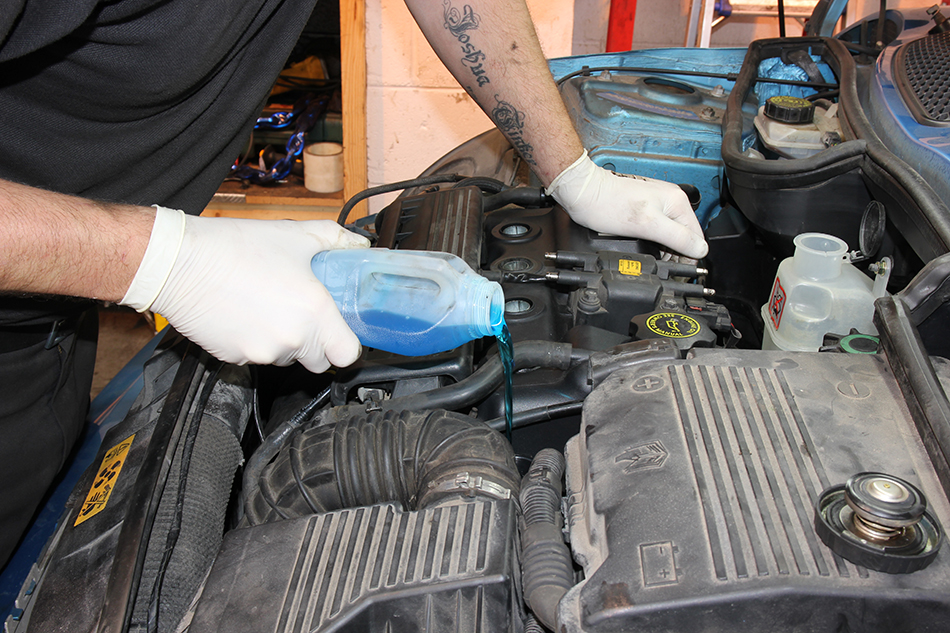
Where do I refill the engine coolant on a car?
The most obvious points for refilling the engine coolant are the expansion or header tank and direct into the radiator. However, it may help to detach an upper coolant hose and use a funnel to pour mixed coolant into it. This can force air out of the coolant system instead of waiting for it to rise out.
Car radiator bleed screws
On some engines, a bleed screw is fitted at a high point in the coolant system to help air to escape. By releasing the bleed screw, the coolant system can be refilled until liquid leaks out of it. In some cases, the engine can be run to allow more air to escape. Eventually, only coolant will leak out, meaning the bleed screw should be closed (tightened).
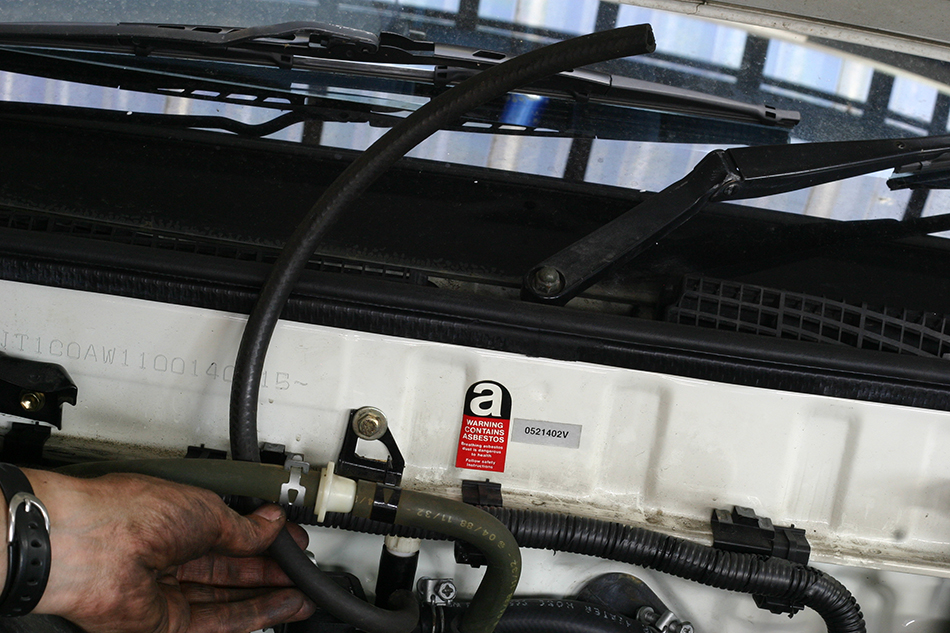
Radiator bleeding a mid-engine car
Bleeding the coolant system for a car where the engine and radiator are at opposite ends can be difficult. Usually, the engine is mid-mounted, such as in a Toyota MR2, or rear-mounted, such as a Porsche 911. And the radiator is fitted at the very front to benefit from airflow to help with cooling.
In such cases, look for a bleed screw or bleed outlet. This may be under the front compartment or in the engine bay. Additional hoses may need to be attached to these bleed points to help raise them even further. Jacking the front or rear of the car and supporting it on jack stands will also help to raise them. Why? Air locked inside a coolant system will rise to the top because it’s lighter than the liquid.
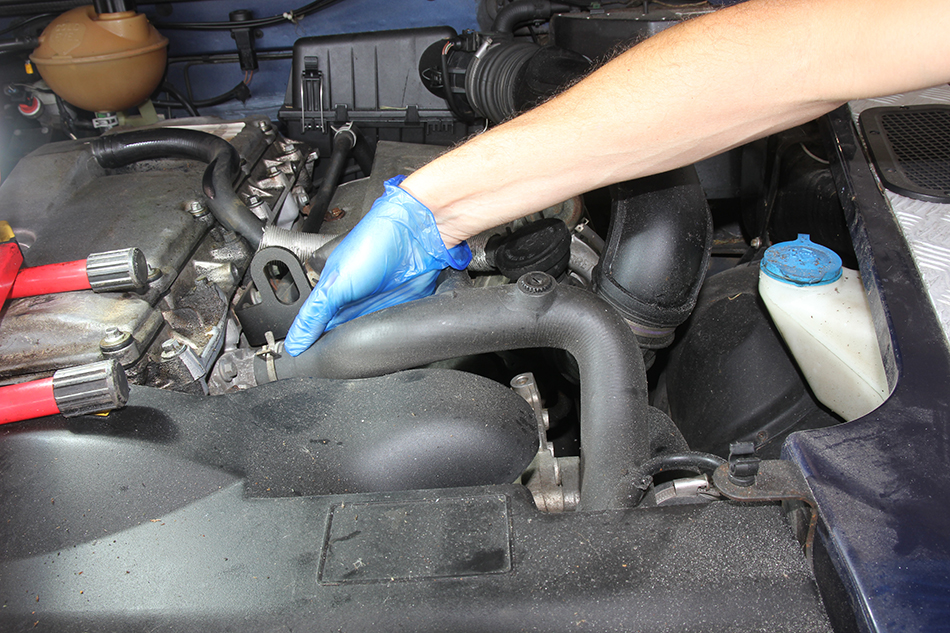
Fill up and squeeze
When you are refilling the coolant system, squeeze any coolant and heater hoses to help disturb any air locks. Remove the caps for any expansion or header tanks and also the radiator pressure cap. Continue pouring in the coolant until whatever you are filling is full.
Switch the heater to hot
The heater or climate control must be set to maximum hot. This will open any valves to allow the coolant to flow through the heater’s matrix. Consequently, any air that’s trapped inside the heater will hopefully be removed.
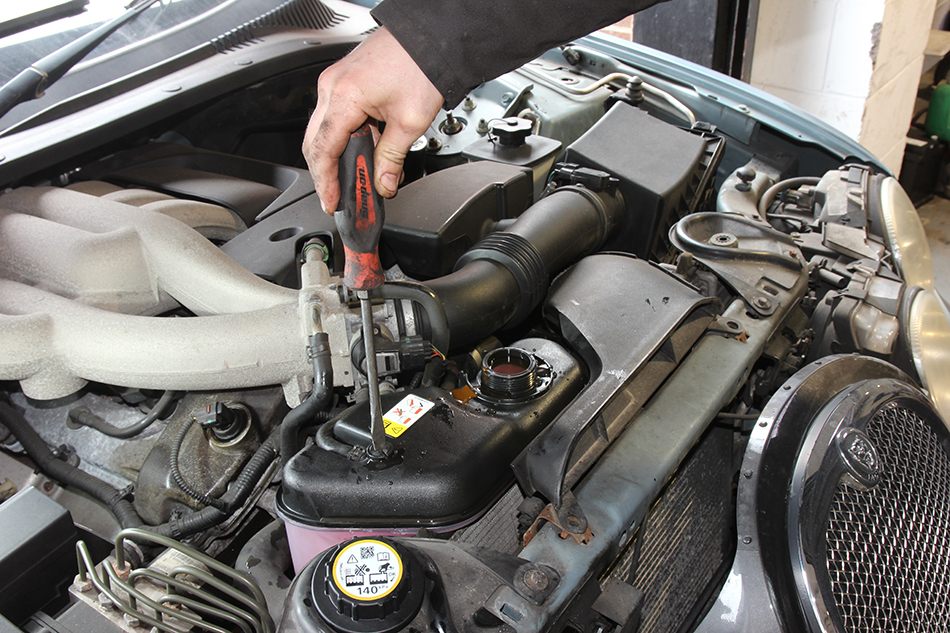
Run the engine
Once the engine coolant has been refilled and no more can be poured in, start the engine. This will help to circulate the coolant and move any air locks. The aim is to allow those air locks to escape. So leave any caps off the header or expansion tank and the radiator. Bleed screws can also be left open to allow air to escape. However, it’s important to watch all of these escape points because coolant may leak out. This can happen when a large air bubble is present, or if the system is overfull.
Whilst the engine is running, top up the coolant if it’s low. And regularly check the coolant temperature gauge in case the engine overheats. This can happen because of an air lock.
Check the coolant hoses are warming up and squeeze them to help disturb any trapped air. Be careful with hot coolant hoses as they can burn your hands.
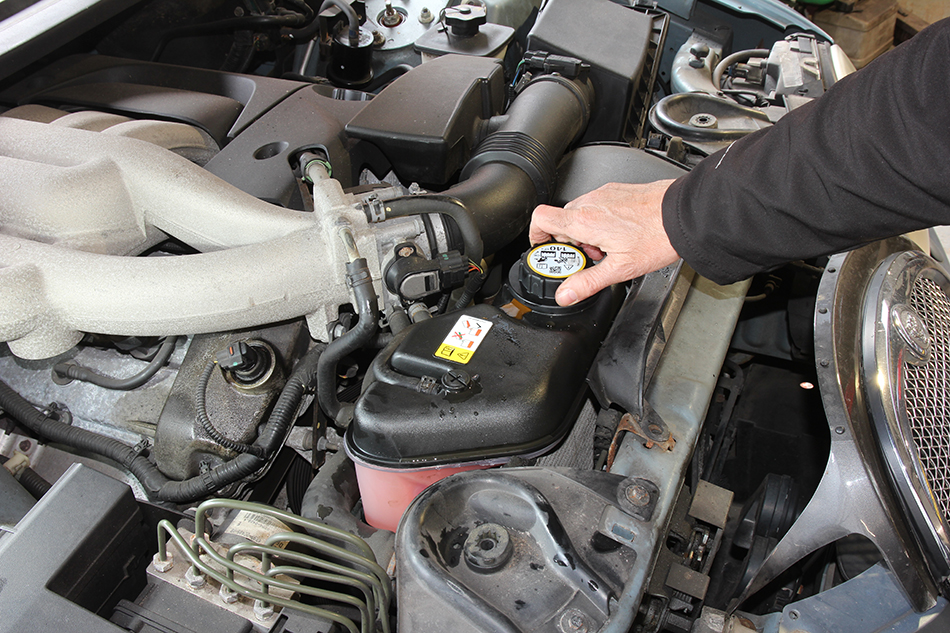
Refit the pressure cap for the car radiator
With the engine running, there may come a point when no more coolant can be added. When this happens, refit all pressure caps and tighten any bleed screws. Leave the engine to run for a little longer to build up pressure in the coolant system. Next, switch off the engine and leave it for at least half an hour to cool down. Afterwards, check the coolant level and top it up if necessary.
Relevant content:

